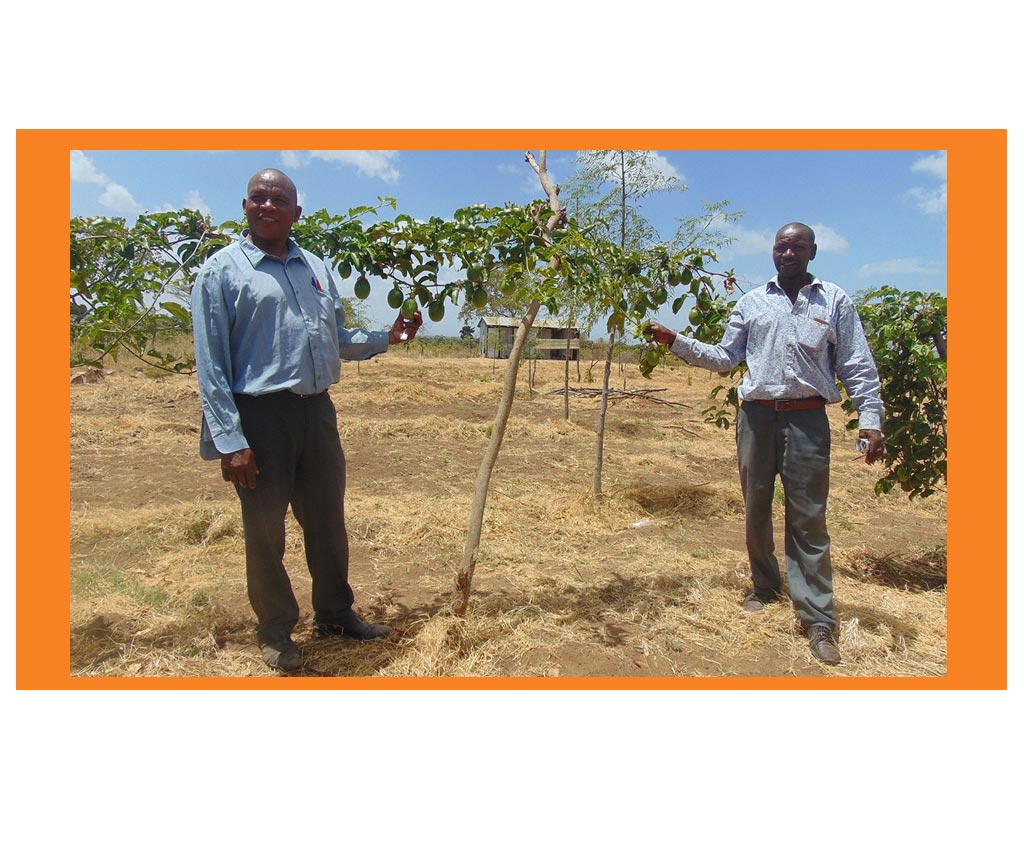GIC Woodlots Already Bearing Fruit
The low hanging passion fruits tautly stretch the plant’s tender tendrils at Tulimyumbu Primary School, Machakos County. A few meters away, paw-paw leaves sway lazily in the hot dry air as if fanning the delicate fruits that are not yet ready for harvesting. The fruits trees stand out amidst the maturing Mukaus, having been intercropped with the drought-resistant trees in the school’s Green Initiative Challenge woodlot.
The chairman of the Technical Committee of the Schools’ Green Initiative Challenge (GIC) Mr. Jan Vandenabeele of Better Globe Forestry is impressed. He exchanges notes on the project with his colleagues from Bamburi Cement Ltd., and the KenGen Foundation before continuing with the tour of the woodlot during an impromptu visit to the school on 6 February.
READ NOW: Specialized ‘Mukau Tree” Facility Set to Change Kenya’s Dry-land Landscape
“The school management and members of the environmental club are dedicated 100% to the project”, said Jackson Muvevi, the school’s Green Teacher. “Even though the whole country is facing serious drought, we have been able to source for enough water to nurture the trees”.
Tulimyumbu Primary School is one of 120 schools from the three semi-arid counties of Embu, Machakos, and Kitui, competing for the top prize in the afforestation competition implemented in a unique partnership with Better Globe Forestry, Bamburi Cement, and KenGen Foundation.
The program, designed as a challenge, involves schools nurturing drought resistant Mukau, Muveshi and Terminalia brownii trees to maturity, with the best performing schools benefiting from education scholarships, school trips, infrastructural developments and cash awards. The fruit trees were introduced to the GIC, currently in its second phase, to supplement the schools’ dietary needs, and at Tulimyumbu, their success did not come without challenges.
“Intercropping different tree species needs a fair amount of attention and forethought”, explained Mr. Muvevi. “Factors such as drainage, soil texture and the pH all have a part to play in determining the success of your school’s woodlot. Thankfully through capacity building sessions from the KenGen Foundation and Better Globe Forestry, we have learnt very valuable lessons in nurturing the seedlings to maturity.
READ NOW: New ‘Green’ Teachers Trained for GIC Phase III
Innovations, such as mulching and staking, have been thriving during the few months we planted the fruits in response to new challenges and changing conditions”, he added.
The fruit trees planted at Tulimyumbu and other schools participating in the GIC were chosen based on how they deal with the semi-arid climate, including drought tolerance. The benefits of the fruit trees go beyond just food security and nutrition. The schools also stand to benefit financially from the sale of the surplus crop at the nearest markets.
The Green Initiative Challenge also aims to raise the awareness and participation of school children in environmental conservation activities. The sustainable management of tree nurseries and woodlots will provide the participating schools with a renewable source of wood fuel thus reducing pressure on surrounding vegetation and forest resources.
It also enables the schools an opportunity to diversify their income through the sale of fruits, timber & non-timber products.
Follow us on Twitter through @KenGen_Foundatn and like our Facebook page for more updates.
–Ernest Nyamasyo, Communication Officer


